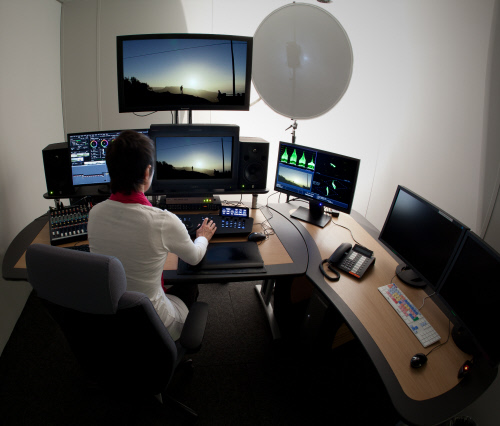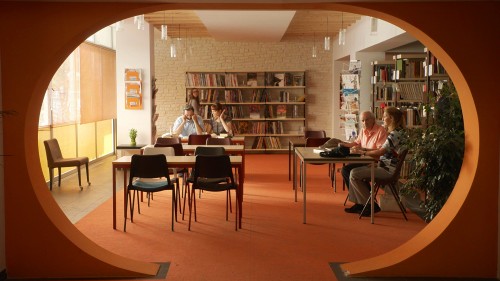Radio Télévision Suisse (RTS), the French-language public broadcaster in Switzerland, has added a Baselight ONE system with Slate control panel to handle its in-house productions. Headquartered in Geneva, RTS produces a wide variety of news, sport, entertainment and documentary television programming. RTS already has a Baselight TWO system, installed five years ago, which has proved extremely effective in handling the interoperability with their edit suites.
RTS has five in-house colourists, working on documentaries and reportage as well as dramas. The two Baselight grading systems are closely integrated with the Avid editing network. Baselight outputs Avid DNxHD files in MXF onto the shared storage, allowing RTS to meet the tight timescales of television production.

Anne-Laure Sacher in the grading suite at RTS
“With Baselight we can add a new quality to our productions, a cinematic look, while maintaining the tight turnaround of episodic television,” said Anne-Laure Sacher, colourist at RTS. “Our new suite adds even more capacity, and the Slate control panel retains the same high standards we are used to with the Blackboard 2 panel on our existing Baselight system. To me, Blackboard control surfaces are above all the others and have the precision and ergonomic convenience I expect.”
RTS recently used its Baselight TWO and Blackboard 2 on Specimen, a renowned TV magazine on psychology, and a new 6×50 minute drama series, A Livre Ouvert. This co-production between RTS and France 2 was shot on ARRI ALEXA and finished in-house at RTS in Geneva. “Baselight has very appealing features, one being that I can set up multiple groups of shots within a scene and perform rapid copy-paste operations across them; the new layer blending and compositing features in Baselight 4.4 are also a must,” adds Anne-Laure.

A Livre Ouvert
“Broadcasters and television production companies are realising that efficient workflows are the only way to maintain and improve production values as budgets are being cut,” said Wolfgang Lempp, co-founder of FilmLight. “One of the best ways to improve production workflows – particularly in this era of digital cameras with wide dynamic range – is by making images look good from capture on set through editorial and effects to the final grade. How do you do that? By providing the colour management, grading tools and metadata at every stage, so you can be confident from the start and keep refining throughout without wasting any time.”



